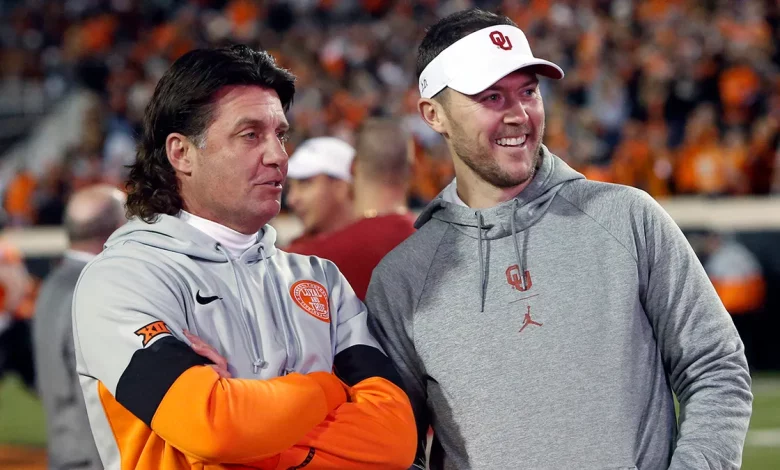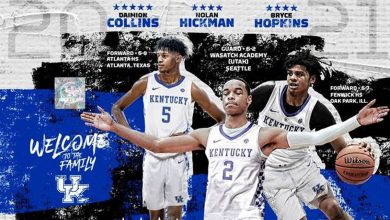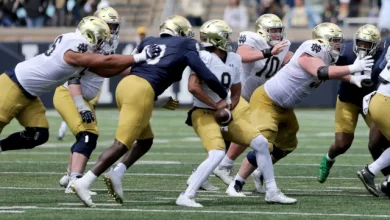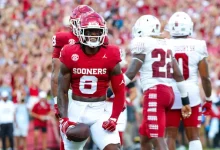The return of Bedlam football holds greater significance for Oklahoma, as it revitalizes their historic rivalry, boosts recruitment, enhances national visibility, and strengthens their football legacy more than it does for Oklahoma State.

The Bedlam Series, an intense and storied rivalry between the University of Oklahoma Sooners and Oklahoma State University Cowboys, has long been a defining feature of college football in the state of Oklahoma. For decades, this annual showdown has been more than just a game; it embodies regional pride, athletic excellence, and a deep-seated rivalry rooted in history and culture. Recently, there has been much anticipation around the potential return of Bedlam football, especially after periods of hiatus or reduced significance. While the rivalry benefits both institutions, the return of Bedlam carries far greater importance for Oklahoma—emotionally, strategically, and historically—than it does for Oklahoma State. This comprehensive exploration delves into why this is the case, examining the rivalry’s historical roots, cultural implications, recruiting advantages, media exposure, regional influence, and broader strategic considerations.
Historical Context of the Bedlam Series
1. Origins and Evolution
The Bedlam Series began in 1904, making it one of the oldest rivalries in college football. Over the decades, it grew in intensity, featuring memorable games, dramatic finishes, and legendary players. Oklahoma historically dominated the series, accumulating more wins and establishing itself as a football powerhouse. Oklahoma State, then Oklahoma A&M, emerged as a strong regional rival, and the rivalry became a focal point of Oklahoma sports culture.
2. Shifts in the Rivalry’s Significance
In recent years, the rivalry’s intensity waned due to conference realignments, scheduling conflicts, and differing program trajectories. There was a period when the game was less prioritized, diminishing its regional and national prominence. However, with the potential return of Bedlam, both programs recognize its importance, but the stakes and implications are perceived to be more profound for Oklahoma.
Cultural and Emotional Significance
1. Oklahoma’s Football Identity
For Oklahoma, football is woven into the fabric of its state identity. The Sooners have a storied history of national championships, legendary coaches like Bud Wilkinson, Barry Switzer, and Bob Stoops, and a tradition of excellence that has contributed to a collective sense of pride. The rivalry with Oklahoma State is a cornerstone of this identity, symbolizing regional dominance and athletic superiority.
2. The Role of the Rivalry in Oklahoma’s Legacy
Winning Bedlam is a matter of prestige and legacy for Oklahoma. It’s not just about bragging rights; it’s about asserting dominance within the state, reinforcing the perception of Oklahoma as a football powerhouse, and preserving its historical dominance in the region. The return of Bedlam rekindles this sense of pride, tradition, and competition, which resonates deeply with alumni, fans, and the broader Oklahoma community.
3. Oklahoma State’s Perspective
While Oklahoma State also values the rivalry, their program’s identity has historically been built around competing against top-tier programs nationally, and they have sought to establish their own legacy. For Oklahoma State, Bedlam is significant but less central to their broader identity, which often emphasizes developing competitive teams capable of achieving national prominence independently.
Strategic and Recruiting Impacts
1. Oklahoma’s Recruiting Advantage
One of the most tangible benefits of a high-profile rivalry game like Bedlam is recruiting. Oklahoma’s success in recruiting top talent is often bolstered by its national exposure, which is amplified during rivalry games. A return to Bedlam means more opportunities to showcase the program on a big stage, attract elite recruits, and demonstrate regional dominance.
2. The Power of a Win
For Oklahoma, winning Bedlam can be a significant recruiting tool, emphasizing their historical success and regional superiority. It offers a platform to demonstrate program strength, appeal to recruits who want to compete at the highest levels, and foster a winning culture that appeals to talented athletes.
3. Oklahoma State’s Position
While Oklahoma State also benefits from rivalry exposure, their recruiting strategy often involves emphasizing their program’s growth, recent success, and potential. The rivalry’s return provides an opportunity for Oklahoma State to gain more national attention, but it’s less fundamental to their core recruiting narrative compared to Oklahoma.
Media Exposure and National Visibility
1. The Power of Rivalry Games
Rivalry games like Bedlam generate significant media coverage, television ratings, and national attention. For Oklahoma, a victory in Bedlam often garners headlines, boosts rankings, and elevates the program’s profile across the country.
2. Oklahoma’s Gains from Bedlam
Historically, Oklahoma’s success in Bedlam has coincided with periods of national prominence, helping to secure bowl game invitations, playoff appearances, and media accolades. The return of Bedlam promises to reignite this visibility, providing Oklahoma with more opportunities to showcase its talent, coaching, and athletic program to a broader audience.
3. Oklahoma State’s Media Benefits
While Oklahoma State also benefits from Bedlam’s return, their exposure is generally secondary to Oklahoma’s. Their media narrative often revolves around their rise as a competitive program, but they lack the same historical dominance and national recognition that Oklahoma commands.
Regional and Statewide Influence
1. Oklahoma’s Dominance and Regional Pride
The rivalry’s return reinforces Oklahoma’s regional dominance and sustains the narrative of Oklahoma as the premier football state. Oklahoma’s success and pride are tied to the notion of being the “big brother,” the team that has historically controlled the rivalry.
2. The Impact on State Identity
For Oklahoma, winning Bedlam is often seen as a matter of regional pride, impacting perceptions within the state and beyond. The game is a cultural fixture, with high attendance, spirited fan participation, and media coverage that influences state-wide conversations.
3. Oklahoma State’s Regional Role
Oklahoma State, while also benefiting from the rivalry’s return, is often viewed as the underdog or challenger. The game’s importance for Oklahoma State lies in elevating their program’s stature and credibility, but it does not hold the same weight in defining their regional identity as it does for Oklahoma.
Broader Strategic and Future Implications
1. Sustaining a Traditional Powerhouse Image
For Oklahoma, the return of Bedlam is crucial for maintaining its image as a traditional college football powerhouse. It’s a chance to reinforce their legacy, demonstrate dominance, and continue a rivalry that has historically contributed to their national reputation.
2. Program Motivation and Fan Engagement
A high-profile rivalry game motivates players, coaches, and fans alike. For Oklahoma, it ignites enthusiasm, national interest, and a sense of purpose that can translate into better performance on the field.
3. Long-Term Legacy and Historical Significance
Winning Bedlam contributes to Oklahoma’s historical narrative, helping to secure their place among college football’s elite. The rivalry’s return ensures that Oklahoma’s rich tradition remains alive and relevant.
4. Oklahoma State’s Perspective
While Oklahoma State also benefits from the rivalry’s return, their focus is often on growth, program development, and establishing their own identity. Their success is less dependent on Bedlam and more on sustained performance, recruitment, and national progress.
Why It’s More Important for Oklahoma
1. Cultural and Historical Roots
Oklahoma’s identity is deeply intertwined with college football success, and Bedlam is a central part of that narrative. The game symbolizes regional dominance, tradition, and pride—elements that are more vital to Oklahoma’s self-perception than to Oklahoma State’s.
2. Program Legacy and Historical Dominance
Oklahoma’s historical success has been built on national championships, legendary coaches, and a consistent record of excellence—elements that are reinforced through Bedlam victories. The rivalry’s return strengthens their legacy and maintains their status as a football titan.
3. Recruitment and National Exposure
While both programs benefit, Oklahoma’s recruiting and national exposure are more directly tied to the rivalry’s high-profile nature. The game offers a platform to showcase their talent and program to recruits and media outlets, reinforcing their standing.
4. Regional Pride and Identity
For Oklahoma, winning Bedlam is a matter of regional pride, cultural identity, and historical continuity. The game’s return revitalizes these sentiments and affirms Oklahoma’s dominance in the state and beyond.
5. Broader Strategic Goals
Oklahoma’s broader strategic goals—maintaining a national championship contender status, recruiting top talent, and elevating their profile—are closely linked to the rivalry’s return. The game provides a crucial competitive and promotional advantage that aligns with their long-term ambitions.
The return of Bedlam football is undeniably significant for Oklahoma—more than for Oklahoma State—due to its deep roots in the state’s football culture, its role in shaping Oklahoma’s national reputation, and its influence on recruiting and media exposure. While both programs stand to benefit, Oklahoma’s historical dominance, regional identity, and strategic priorities make the rivalry’s revival more impactful for their legacy and future success. For Oklahoma, Bedlam isn’t just a game; it’s a symbol of tradition, pride, and aspiration—a vital element in their quest for continued excellence and national prominence in college football.









